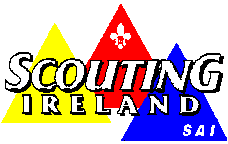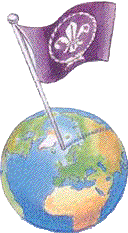 |
1st Meath (Dunboyne) Scout emblem |
 History of the Design
History of the Design
The basic design was in use for centuries before it came to indicate North
on a compass. The Chinese are known to have used it as a direction symbol as
early as 2000BC. The Larousse Encyclopedia notes that some Etruscan bronzes
and Roman ornaments carried the design, and it has been found on ancient
monuments in Egypt and India.
Its use as a navigation aid in Europe probably dates from the end of the
13th Century when Marco Polo brought back a compass from Cathay. The Grand
Encyclopedia credits an Italian marine pilot, Flavio Gioja of Amalfi, for
drawing it as a North Point on a primitive compass he built.
The Encyclopedia Britannica gives another interesting version of the origin
of the design. This is that it derives from the "Wind Rose" which is much
older than the magnetic compass and first appeared on the charts of
Mediterranean sea pilots. The eight main wind directions were shown by Greek
letters and the North Wind marked "T" for Tramontana. In time, the "T" was
embellished or combined with an arrowhead so that it was no longer
recognisable as "T".
The design is much used elsewhere. It appears in ornate versions on heraldic
coats of arms, and in many decorative designs. Sometimes it is meant to
represent a lance or spearhead, a lily (Fleur de Lys) and even a bee or a
toad. So, today, as the symbol continues to point the way for navigators so, all
over the world, it points the way to service and brotherhood for all members
of the Scout Movement.
Beavers|
Cubs|
Scouts|
Ventures|
Leaders |